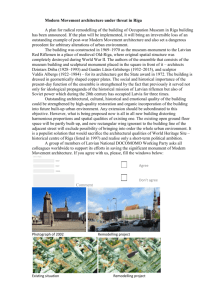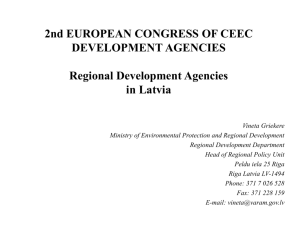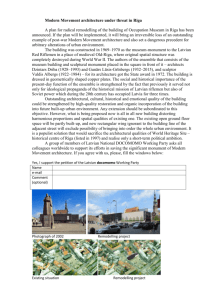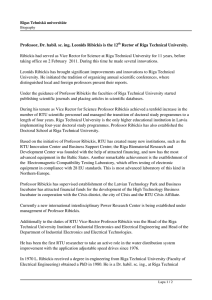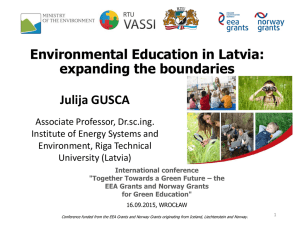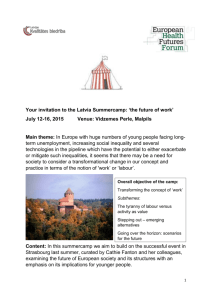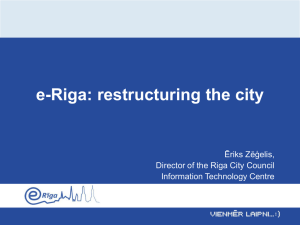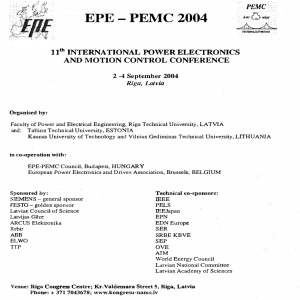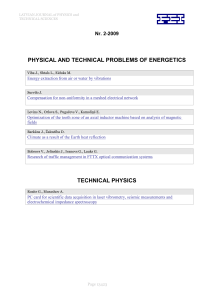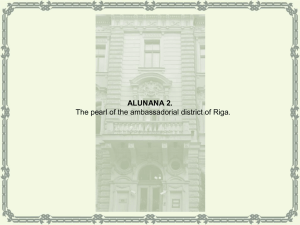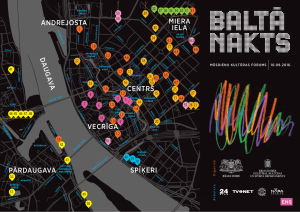Dace Kalvane, Mgr. Arch. A’Plus Schuerman Architects
advertisement
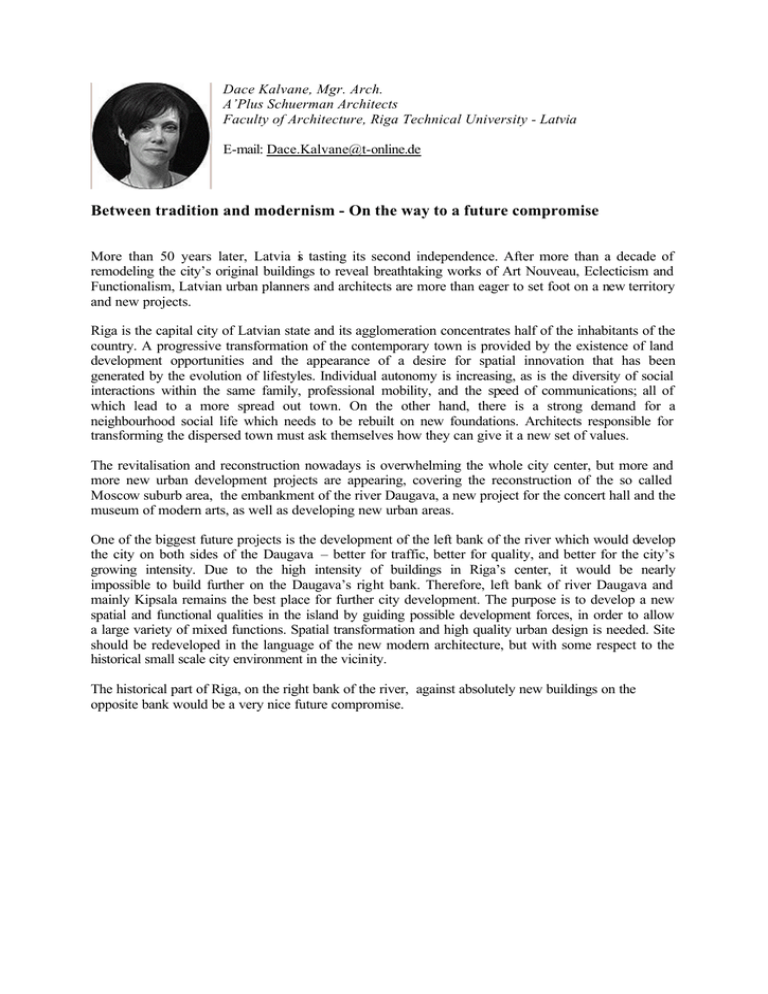
Dace Kalvane, Mgr. Arch. A’Plus Schuerman Architects Faculty of Architecture, Riga Technical University - Latvia E-mail: Dace.Kalvane@t-online.de Between tradition and modernism - On the way to a future compromise More than 50 years later, Latvia is tasting its second independence. After more than a decade of remodeling the city’s original buildings to reveal breathtaking works of Art Nouveau, Eclecticism and Functionalism, Latvian urban planners and architects are more than eager to set foot on a new territory and new projects. Riga is the capital city of Latvian state and its agglomeration concentrates half of the inhabitants of the country. A progressive transformation of the contemporary town is provided by the existence of land development opportunities and the appearance of a desire for spatial innovation that has been generated by the evolution of lifestyles. Individual autonomy is increasing, as is the diversity of social interactions within the same family, professional mobility, and the speed of communications; all of which lead to a more spread out town. On the other hand, there is a strong demand for a neighbourhood social life which needs to be rebuilt on new foundations. Architects responsible for transforming the dispersed town must ask themselves how they can give it a new set of values. The revitalisation and reconstruction nowadays is overwhelming the whole city center, but more and more new urban development projects are appearing, covering the reconstruction of the so called Moscow suburb area, the embankment of the river Daugava, a new project for the concert hall and the museum of modern arts, as well as developing new urban areas. One of the biggest future projects is the development of the left bank of the river which would develop the city on both sides of the Daugava – better for traffic, better for quality, and better for the city’s growing intensity. Due to the high intensity of buildings in Riga’s center, it would be nearly impossible to build further on the Daugava’s right bank. Therefore, left bank of river Daugava and mainly Kipsala remains the best place for further city development. The purpose is to develop a new spatial and functional qualities in the island by guiding possible development forces, in order to allow a large variety of mixed functions. Spatial transformation and high quality urban design is needed. Site should be redeveloped in the language of the new modern architecture, but with some respect to the historical small scale city environment in the vicinity. The historical part of Riga, on the right bank of the river, against absolutely new buildings on the opposite bank would be a very nice future compromise.
